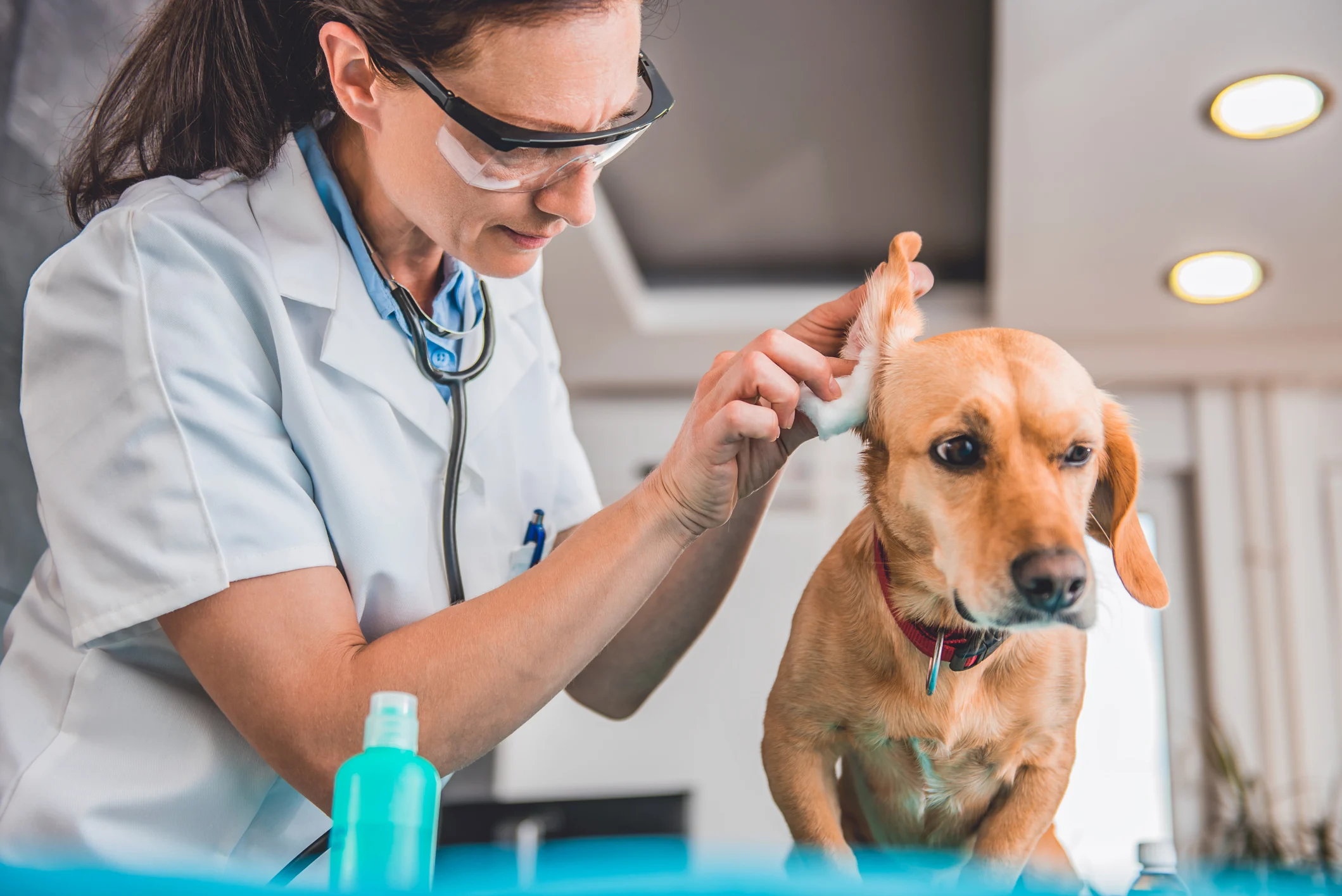
In the Literature
Savaliya BF, Kim S, Veltman T, Trott DJ. Comparison of the in vitro antibiofilm activities of otic cleansers against canine otitis externa pathogens. Vet Dermatol. 2025;36(2):148-158. doi:10.1111/vde.13331
The Research …
Biofilms have been reported to affect many species in veterinary medicine1; production by microbes may be responsible for cases of chronic, nonresolving otitis externa. These cases are described clinically as nonresolving otitis externa, with purulent to mucoid debris noted on examination.2
This studya evaluated a variety of clinical isolates, including Staphylococcus pseudintermedius, Pseudomonas aeruginosa, Streptococcus canis, Proteus mirabilis, Escherichia coli,and Malassezia pachydermatis. Biofilm production was identified in at least 1 isolate from each organism, with P aeruginosa and M pachydermatis having the most isolates identified as strong biofilm producers.
Antibiofilm activity of 3 ear cleansers that contain antimicrobial adjuvants (ie, polyhexamethylene biguanide hydrochloride [PHMB] and EDTA, N-acetylcysteine (NAC), tromethamine-EDTA [tris-EDTA]) was tested against 10 isolates of each organism. Minimum biofilm eradication concentration, minimum inhibitory concentration, and minimum bactericidal concentration were determined for all isolates.
The PHMB/EDTA product at low concentrations was most effective against all isolates. NAC exhibited good overall antibiofilm activity against bacterial pathogens but required higher concentrations than clinically recommended for elimination of M pachydermatis biofilms. Tris-EDTA only demonstrated antibiofilm activity against S canis and some S pseudintermedius isolates.
… The Takeaways
Key pearls to put into practice:
Varying levels of biofilm production were identified in all isolates (ie, S pseudintermedius, P aeruginosa, E coli, P mirabilis, M pachydermatis) that commonly cause otitis externa. Robust biofilm producers were identified in the largest number of isolates from P aeruginosa and M pachydermatis.
In cases of chronic otitis externa with purulent to mucoid debris, the presence of a biofilm should be considered. Aggressive cleaning with a deep ear flush followed by antibiofilm ear cleaners that contain PHMB/EDTA, NAC, or tris-EDTA with concurrent topical antimicrobial therapy can be beneficial. In this study, combination therapy with PHMB/EDTA was more effective than NAC and tris-EDTA as single antimicrobial adjuvants.
This study was performed in vitro; researchers recommended further in vivo studies to confirm antibiofilm activity. Other research has shown NAC and tris-EDTA to be highly effective at breaking down biofilm; however, different concentrations were evaluated than those in the current study.3 According to this author, a combination of these 2 adjuvants would be beneficial, similar to the PHMB/EDTA product evaluated in this study.
Although the PHMB/EDTA product in this study is only available in Australia, a tris-EDTA/NAC product is available in the United States. The author has used the tris-EDTA/NAC product successfully in cases of chronic, nonresolving otitis externa in which bacteria were suspected to be producing biofilm.
a This study was funded by Dermcare-Vet, Australia.
You are reading 2-Minute Takeaways, a research summary resource presented by Clinician’s Brief. Clinician’s Brief does not conduct primary research.